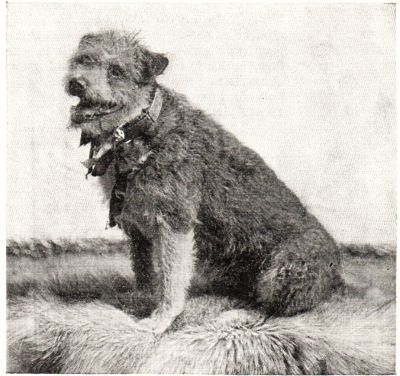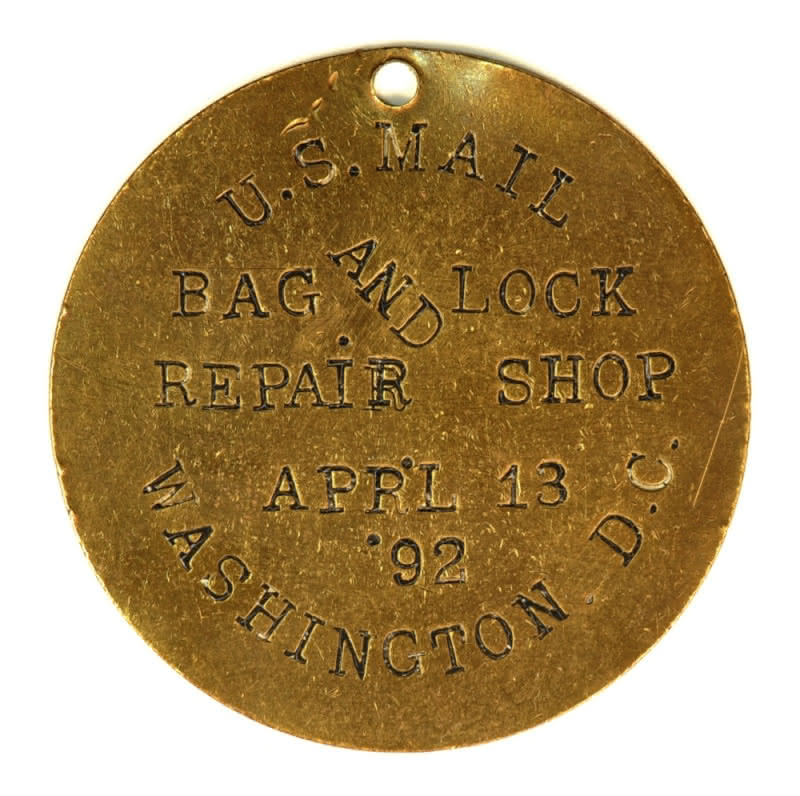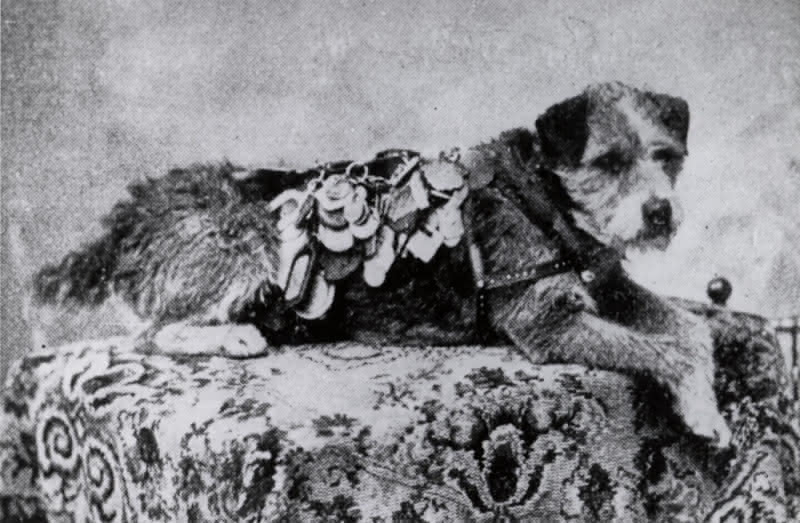The story of “Owney” the mail dog is well-archived in U.S. Government resources, with it being covered on the websites of the U.S. Postal Service and the Smithsonian National Post Museum. Owney was a scruffy stray dog who found his way to the Albany Post Office in 1888. He became a fixture there, and he eventually began traveling across the United States on Railway Post Office train cars. Unlike many adventures who only obtain notoriety after death, Owney was a celebrity of his day. We will review the evidence in the form of a contemporaneous article about a then-10-year-old Owney in the January 26, 1897 issue of Harper’s Round Table.
“Owney, the Mail-Dog”
“Owney, the Mail Dog” was the second article in the January 26, 1987 issue of the magazine. While it did not have an author on the byline, the article led off with a photograph of Mr. Owney:

I will work through the short article in sections.
A Contemporaneous Piece
The 1897 Owney article is interesting in that it provides a portrait of how the Owney story was told while the legendary mail-dog was alive. The article described Owney as he was at the time of publication:
Owney is a terrier, now ten years old, and weighs about thirty-five pounds.
Harper’s Round Table was a children’s magazine. Thus, the article endeavored to give Owney a proper introduction, even if his fame may have preceded him in some news-consuming circles:
By his own exertions he has achieved a fame of which to be proud, and as a traveller a distinction that few men could boast of.
Thus began the re-telling of Owney’s path to fame.
The Beginning of Owney’s Journey
It is most likely the case that most puppies tend to focus on quaint, immediate things, rather than the path they want to walk in life. If Owney was like most puppies, his story would not have made Harper’s:
When a pup he decided upon his vocation, and in accordance with his views he entered the basement of the post-office at Albany and attached himself to the regular mail service.
Owney took it upon himself from a young age to zealously guard the sacks of mail at the Albany Post Office. This did not go unrecognized by the postal workers at the facility:
His devotion to the self-appointed duty of guarding mail-sacks interested the clerks, and as a reward he was permitted to accompany them on trips in the mail cars.
Owney’s small Albany world was about to grow much larger.
Owney the Traveler
Owney did not merely take short trips on railcars from and to Albany. Harper’s explained that “he would disappear for weeks at a time, returning at last to his home at Albany.” But no matter where Owney went, he stayed close to the thing he loved most:
The numerous railway tags attached to his collar upon his return [to Albany] showed that he had been travelling with the mails.
Starting from Albany in the northeast, Owney journeyed to the corners of the United States, having made appearances in Seattle, Washington, Galveston, Texas, and Tampa, Florida, among countless other locations.
The (Literal) Weight of Owney’s Duty
One of Owney’s many trips saw him accompany mail from Albany to Washington DC. In the capital, his devotion to duty was recognized by John Wanamaker, who was then serving as the United States Postmaster General under President Benjamin Harrison (to be sure, Wanamaker’s 1889-93 stint as Postmaster General is not what he is most-known for). Wanamaker gave Owney what Harper’s described as an elaborate harness. Owney took his new uniform on tour, and at each stop he would have baggage tags affixed to it.

So numerous did the tags become that Harper’s reported they soon combined to equal Owney’s weight, requiring him to return to Albany in order that he could be “relieved of his honors.”
Owney’s International Travels and Tribulations
Owney’s adventures took him outside the United States on occasion.
Harper’s notes that Owney made frequent trips to Canada. However, on one of his Canadian excursions, a rail collision cost poor Owney an eye and part of one of his ears. He traveled on though – even reaching foreign conflict zones:
The North German Lloyd steamers have carried him as passenger a number of times, and the P. and O. steamers took him to the far East during the Chino-Japanese war. During this trip he inspected the mail service of India.
Owney’s deep passion for mail knew no national boundaries.
Summarizing Owney’s Life
Harper’s provided readers with a summary of Owney’s life to the date of the publication of the article:
Nothing will induce him to ride in any but the mail-cars, where, curled up on the pouches, he will permit none but the mail-clerks to touch them. These men are very fond of him, and he never lacks for attention. He treats them all impartially, and comes and goes as he wills. As another dog knows a bone, so Owney does a mail-sack, and he will leap aboard the trains with them in the most unexpected places, to be always received with delight.
Conclusion
The final words of Harper’s Owney article were as follows:
Duly recorded in the history of the United States Post-office, [Owney] has its great army of employees, from the highest of the lowest, for his firm friends.

Owney would be killed just shy of five-months of the publication of the Harper’s article under disputed circumstances. However, Harper’s assertion that Owney was “duly recorded in the history of the United States Post-office” has indeed held up.
More than 100 years after Owney’s final ride, there are numerous resources about Owney found on U.S. Postal Service publications and elsewhere. While the purpose of the instant article is to focus on one account of Owney’s life from when he was alive, I will list several additional Owney resources for readers who may want to learn more.
- Topical Reference Page for Owney at National Postal Museum
- USPS Facts Page About Owney
- Library of Congress page
- Wikipedia Page
- Articles about Owney in newspapers published between 1890-1899 (courtesy of Elephind)
Rain, snow, sleet, or hail, it sounds like Owney accompanied the mail.